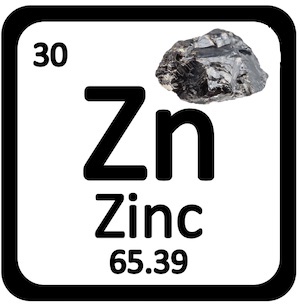On January 12, 2021, we had the privilege of hosting Dr. Teresita Padilla-Benavides, an Assistant Professor of Molecular Biology and Biochemistry at Wesleyan University in Middletown, CT, to present our first webinar of the new year. Her webinar discussed her research on the differential mechanisms for transcriptional regulation of myogenic and metal homeostasis genes. If you missed the live session of the webinar, we’ve got you covered here with a link to a recording of the webinar, as well as a recap below:
Introduction
The research that she discussed in her webinar was culminated over a period of roughly 3-4 years of Dr. Padilla-Benavides' work, which she began during her tenure as a Research Assistant Professor at the UMass Medical School, and is now continuing at Wesleyan. She first introduced the role of copper in our bodies. We intake copper in our diet, which depends on special transporters. CTR1 is the first of these transporters in the intestinal epithelial cells, which facilitates initial intake of copper.
ATP7A is another one of these transmembrane copper transporters, functioning to move the ions into the liver from the intestines, and then binding to small molecules and chaperones that will eventually distribute it throughout our body and into organs and tissues via protein-protein interactions. Of these organs and tissues, the brain requires most of the ions due to its fundamental contributions to the body's energy production processes. In addition, the ions are similarly transported to adipose tissue, and muscle tissue, the latter of which also requires a significant amount of micronutrients as a part of the energy production process. ATP7B, on the other hand, helps to transport the ion from the cells where its no longer needed, and then will facilitate excretion in the liver bile. As a whole, CTR1, ATP7A, and ATP7B are the primary and most important transporters of copper throughout the body.
Clinical Significance
With a failure/mutation in ATP7A transporter → Menkes’ disease: Abnormal intestinal copper absorption, deficient mitochondrial cuproenzymes. This manifests as:
- Nervous system deterioration, seizures
- Premature birth
- Osteoporosis
- Blue sclera
- Growth failure
- Weak muscle tone (hypotonia)
The most important clinical characteristics for Dr. Padilla-Benavides' research with respect to Menkes' disease are highlighted in bold: growth failure and weak muscle tone.
With a failure/mutation in ATP7B transporter → Wilson’s disease: Abnormal execution of Cu+ from liver and accumulation of Cu+ in tissues. This manifests as:
- Liver disease
- Kidney Ca2+ accumulation
- Osteoporosis
- Cardiomyopathy
- Ataxia (lack of coordination) or dystonia (repetitive movements)
Again, the most important clinical characteristics to Dr. Padilla-Benavides' research with respect to Wilson's disease are highlighted in bold: ataxia and dystonia.
Copper in Skeletal Muscle Differentiation & Development
Her lab's research is primarily focused on the role of copper in skeletal muscle differentiation and development. Her lab proposes that copper performs different functions in skeletal muscle cells. In the webinar, she discussed the role of transcription factors how they maintain metal homeostasis and differentiation. To investigate their role, they first isolated precursor cells, then expressed transcription factor MyoD which lead to the next stage in which they differentiated into myoblasts. Chicken embryo extracts (CEE) and FBS treatments were used, and in the next stage the myoblasts express Pax7 (a marker of proliferation). The cells next demonstrate commitment in expressing Myogenin, where they then differentiate into myotubes over the course of 2-3 days. The trigger determinants utilized were insulin and low serum during the final stage of differentiation into myotubes. An illustration of the process can be seen below:
Imaging of the myoblasts in culture, and across the different stages of proliferation and differentiation shown below visually demonstrates the formation of myotubes in the last step:
Therefore, it was determined that myogenesis was dependent on the presence of copper. When copper was withheld, there was no formation of myotubes observed.
What is the role of copper in transcriptional regulation?
In order to further address the central question surrounding the role of copper in transcriptional regulation, Dr. Padilla-Benavides discussed MTF, a key transcription factor. MTF1 stands for: Metal binding transcription factor 1, and is a metal-responsive transcription factor. When cells encounter metal stress, MTF1 is a first responder in preventing metal toxicity. From her research and previous work on the subject, an MTF1-knockout was demonstrated to be embryonically lethal due to factors including liver degeneration as a result of metal toxicity. However, in general, there has been little information available regarding MTF1's role in cell differentiation and development. Her labs proposal is a novel role for MTF1 promoting muscle differentiation that is in addition to, and independent of its role in metal and redox homeostasis.
From the lab work of one of her undergraduates under her supervision, Dr. Padilla-Benavides learned that MTF1 is induced and translocated into the nucleus during myogenic differentiation. Furthermore, using CRISPR/Cas9, MTF1-KO was seen to be tolerated by proliferating myoblasts, but it impaired myogenesis. The deletion of MTF1 therefore had a very strong effect on primary myoblasts, significant enough that they were unable to undergo differentiation. MTF1 expression is enhanced by Cu+ concentration in media and in cells, and the withholding of copper has a negative effect on this expression.
What is the role of the copper binding site?
A reviewer of her work posed the question regarding the role of the copper binding site. In investigating this role, her lab discovered that, in presence of copper, there is enhanced binding of MTF1 to myogenin. When the protein is knocked out, this enhanced binding is not present. And what happens with MyoD, the other protein that is central to muscle differentiation? They discovered that wild-type MTF1 contributes to MyoD binding, but not that of copper. This suggests that copper and its binding site play an important role in MyoD function
Summary: Copper in Transcriptional Regulation During Myogenesis
In summary, MTF1 is required for myogenesis:
- MTF1 translocates to the nucleus during differentiation
- Nuclear copper fluxes correlates with MTF1 nuclear translocation
- MTF1 binds to myogenic genes promoters in addition to classic metal regulatory genes
- MTF1 interacts with MyoD and co-binds to myogenic promoters
- The Cu-binding site is necessary for MTF1 and MyoD binding to myogenic promoters, and for differentiation



